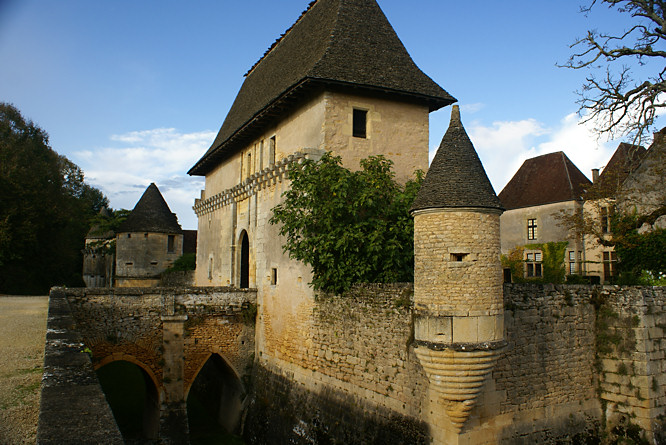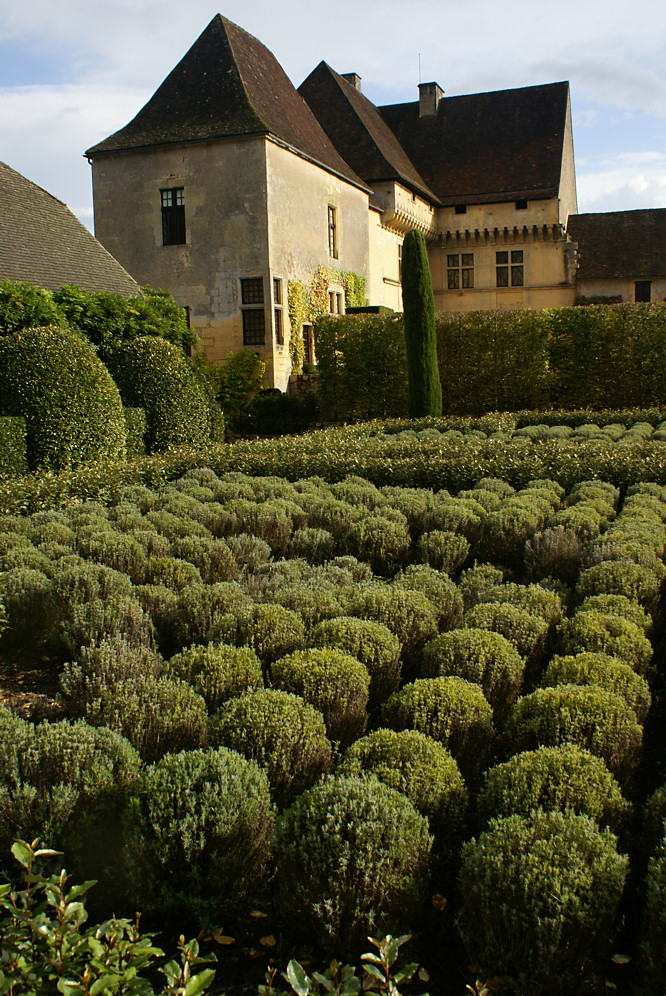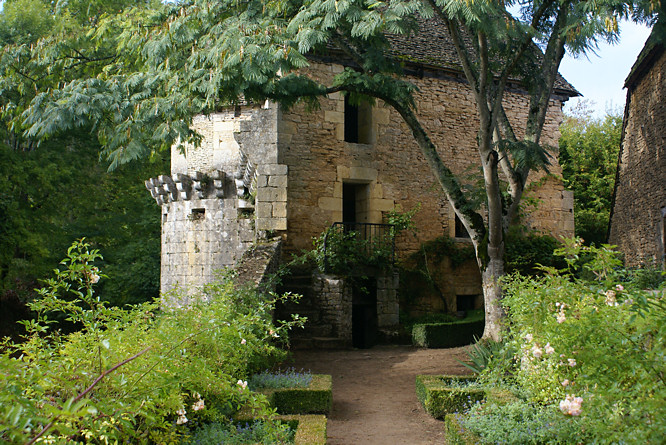Chateau de Losse, Thonac in the Dordogne
Chateau de Losse is near Thonac north west of Sarlat-la-Caneda. If you are coming from the south you will cross the Thonac bridge over the river Vezere (pronounced 'viz-air').

Turn right to find the Chateau Losse. It is very well sign posted. Before you go to the castle have a quick look around the riverside village of Thonac just to the left of the bridge. It is not a big settlement and will only take 10 minutes to walk around but it is worth the detour. There are some attractive yellow sandstone houses and a church in the central square. It has a number of pleasant restaurants and cafes, something which is missing from the Chateau de Losse estate.
The medieval fortress of Château de Losse overlooks the Vézère river. In 1575 a Renaissance Hall was built within the stronghold. It is enclosed by thick stone curtain walls and surrounded by a deep moat ditch. Inside the main hall you can observe the 16th century fine décor and period furnishings.
The romantic gardens within the walls of the the castle are an attraction in their own right. The garden designer has recreated the old French stately home classic garden style by using formal planting of lavender, box hedging and Mediterranean shrubs to produce an ordered fragrant garden vista. You can just imagine the Marquis de Losse strolling around his garden with his wife on his arm in their finery whilst talking to their guests after having had enjoyed a large banquet.

At the back of the house here is a terrace that juts out over the river and offers a view of unspoilt countryside. The Losse family came from Flanders in the 11th century. This medieval fortress was built by Jean II Marquess of Losse. He was a successful soldier, his loyalty to the Crown was the source of his military and social good fortune.
He was page to the French king François I. He served all the sons of Catherine de Medici and was tutor to King Henri IV. As a courtier he was exposed to the new Renaissance architectural style used in contemporary buildings in Paris. He introduced the Renaissance features he liked into the design of his country Chateau and his estate buildings. At the end of his career he returned to Perigord as General governor of Limousin and Guyenne. The religious wars still raged. He put his great experience in defending royal places against the Imperial troops by improving their defensive equipment to make them able to deploy muskets and canons.

The Chateau de Losse was officially listed as a 'Historical Monument' in 1928 and received legislative protection. The fortified gatehouse is the largest of its kind in France. Access to this grand French Chateau is by the bridge over the moat and through the magnificent gatehouse. It is here that you wait for the next guided tour into the main house. You are given a timed ticket but are free to walk around the gardens until it is time for your tour to start.
Travel books

